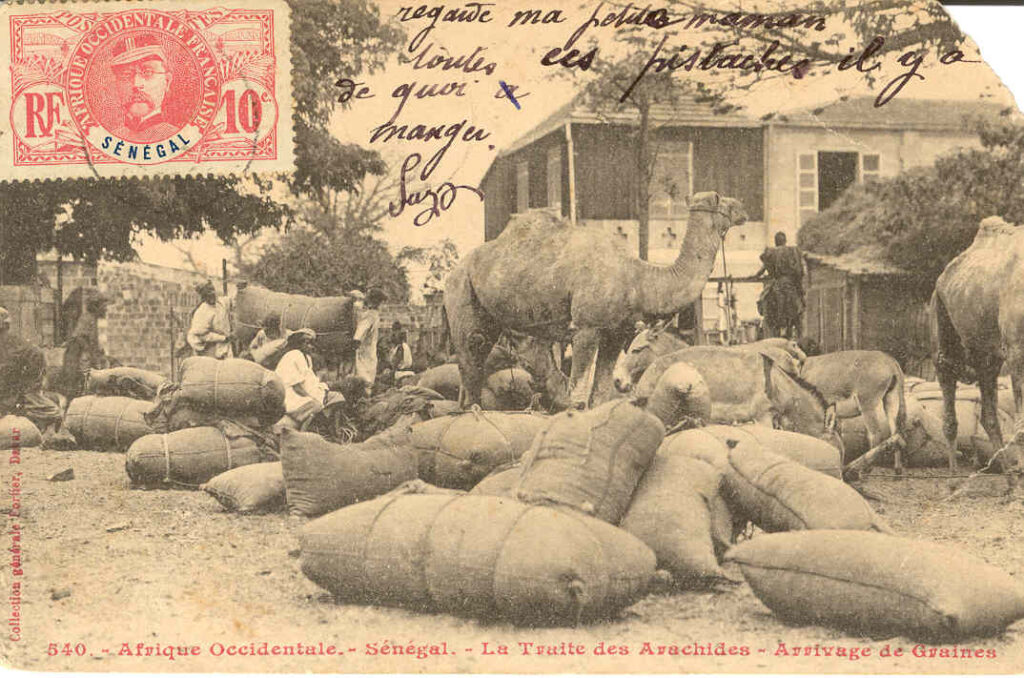I don’t think I have ever read a cookbook cover to cover, but Senegalese chef Pierre Thiam’s The Fonio Cookbook: An Ancient Grain Rediscovered might become the first. The cookbook contains a variety of exciting dishes (several of which I have been making and enjoying myself) featuring fonio, a climate-resilient and nutritious grain native to West Africa. Thiam explores fonio’s rich cultural significance, weaving in stories from his childhood in rural Senegal with a deeper history of the grain’s cultivation and profiles of the growers who harvest and process the crop today.
I bring this up not just to encourage you all to read up on fonio, and Senegalese cuisine more broadly. While reading Thiam’s words, I began to think about the transformative potential of this crop when paired with a food sovereignty approach (more later), contrasted with the vulnerability of Senegal’s current food system, manifested devastatingly by the food crisis of 2007-2008 and by extension, the peanut monoculture.
Recent figures reveal that the country imports around 60 percent of its total food supply, and more than 80 percent of imports are cereals (Resnick, 2014). The latter statistic might seem particularly shocking given that plenty of cereal varieties–African rice, millet, sorghum, and of course, fonio–grow natively and prosperously in Senegal’s agricultural regions. The number is less shocking if you take into account decades of structural adjustment combined with weak agricultural policy, the removal of subsidies for local growers, and the virtual elimination of social protections for smaller producers.
However, structural vulnerabilities in the food system are deeply rooted in the colonial era. French colonial policy in the mid-19th century initiated an extensive process of replacing existing production systems with peanut monocultures whose harvests were destined for European markets. This was paired with several import tariffs that disfavored colonial produce carried in foreign vessels, which “virtually ensured that the French merchant marine had a monopoly on the carrying trade” of the peanut crop (Brooks, 1975, p. 42). As a result, Senegal and specifically its urban population became largely dependent on and culturally accustomed to imports of Western agricultural commodities (even after independence) to the detriment of peasant and smallholder farmers. Ironically, the French decided on the peanut crop for its West African colonies out of fear of growing overly reliant on goods (such as plant oils) imported from the rival British Empire.

Peanut growing areas now account for 40 percent of the country’s agricultural lands. This is startling in the context of climate change because much of Senegal’s domestic agriculture, including urban and peri-urban production, is carried out by smallholder farmers who rely on increasingly fluctuating rainwater for irrigation, and peanuts are an incredibly water-intensive crop. What might the country’s agricultural future look like if farmers were given more climate-smart options and able to diversify their production to include a crop like fonio, one that is economically and environmentally viable, indigenous to the land, and socially-embedded? (Diop et al., 2018).
Thinking through the ways that peanut and fonio production represent and offer dramatically different food futures for the country has guided my research by prompting a closer look at colonial legacies on agriculture and how they have generated lasting impacts on the ecological and cultural landscapes of Senegalese society that continue to inform contemporary food issues. Moreover, this comparison illuminates the applicability of a food sovereignty paradigm in addressing not only issues of food security but also food justice. While these crops have not directly come up in my research on urban food cultivation in Dakar, I’ve been thinking about how the field of food (and by extension, political) possibilities for both city growers and consumers is expanded and how the boundaries between urban and rural are blurred when we begin to ask questions about where, by whom, under what conditions, and–perhaps most importantly–why is this food grown. Food sovereignty thus presents an opportunity to develop new and vibrant forms of social organization and solidarity led by farmers and based on common goals and ecological values among rural and urban communities.
